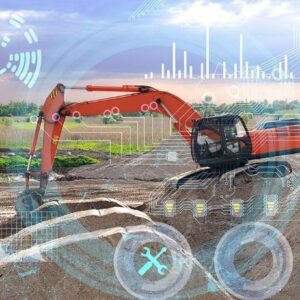
As the world becomes increasingly digital, the concept of a smart home has transitioned from a luxury to almost a necessity. But as our homes grow smarter, it’s crucial to consider the environmental impact of this technology. Sustainable smart homes aim to merge the convenience of smart technology with eco-friendly living, offering homeowners a way to reduce their carbon footprint without sacrificing modern comforts. This guide will explore how to integrate green tech into your daily living, creating a home that is both smart and sustainable.
A New Wave of Energy Efficiency
At the heart of any sustainable smart home is energy efficiency. Advanced thermostats, energy-efficient lighting, and smart insulation materials are just the beginning. These technologies work together to minimize energy usage and ensure that your home only uses what it truly needs, reducing both your bills and environmental impact.
Enhancing exterior illumination while also promoting energy conservation, outdoor LED lighting is a great addition to any sustainable smart home. The longevity and efficiency of LED bulbs provide an environmentally friendly solution for both security and aesthetic purposes without contributing to light pollution.
Indoor Air Quality and Health
Incorporating green tech isn’t only about saving the planet; it’s also about promoting a healthier living environment. Homeowners can now install smart air purifiers and dehumidifiers that monitor and control the air quality automatically. This helps to eliminate pollutants and allergens, creating a cleaner and more comfortable indoor environment.
Green Home Automation
What ties all these different technologies together is the concept of home automation. Smart systems can now learn your behavior and make real-time adjustments for maximum efficiency. This means they can adapt to when you’re home or away, awake or asleep, to ensure that your home is running as sustainably as possible.
Watar Conservation Tactics
Water scarcity is a pressing global issue, making water conservation a crucial feature of eco-friendly homes. Smart irrigation systems, efficient showerheads, and intelligent dishwashers can all play a role in reducing your household’s water footprint. These systems can adapt to your usage patterns and local weather conditions to minimize waste without compromising your daily needs.
Smart Appliance Coordination
The next level of home automation is the integration of smart appliances that communicate and coordinate their functions. Refrigerators, ovens, washing machines, and even robotic vacuum cleaners can all operate in concert to optimize energy use and manage tasks efficiently. By communicating with each other, these smart appliances ensure that no device is overworking and wasting energy, providing a seamless experience that benefits both the homeowner and the environment.
Harvesting Renewable Energy
Solar panels and wind turbines are no longer just for off-grid living. Recent advancements have made renewable energy sources more accessible for the average homeowner. Integrating these systems into a smart home setup can allow for real-time energy management and surplus energy storage or sharing back to the grid, all of which contributes to a more sustainable lifestyle.
Enhanced Home Security and Sustainability
Security systems are also getting a sustainable makeover. Today’s smart home security devices are designed to minimize power consumption while providing superior protection. Motion sensors, smart locks, and surveillance cameras equipped with AI can differentiate between normal and suspicious activities, reducing the number of false alarms and the energy waste associated with them. Incorporating these eco-friendly safety measures affords peace of mind and a reduced ecological footprint.
Smart Materials and Building Techniques
Choosing the right materials can have a profound effect on your home’s environmental footprint. From recycled building materials to paints that help reduce air pollution, the market for eco-friendly building options is ever-expanding. Building techniques that prioritize thermal insulation and natural light not only decrease energy consumption but also enhance the comfort of your home.
Community-Based Energy Initiatives
The sustainable smart home concept is not just confined to individual homes but is also expanding to entire communities. Community-based energy initiatives such as solar farms, collective battery storage, and shared resource management systems are becoming more common. This collective approach enhances sustainability by pooling resources and distributing energy based on demand, streamlining the use of renewable energy, and fostering a sense of community around shared environmental goals.
Waste Reduction and Management
Smart homes can also assist in reducing waste. Composting technologies can turn organic waste into fertilizer for your garden, while smart sorting systems can help you manage recycling more effectively. Employing these tools in your daily life promotes a circular economy and lessens the burden on landfills.
Final Thoughts
Adapting your home to be more sustainable does not mean compromising on quality or convenience. Sustainable smart homes represent the harmony between modern living and environmental responsibility. By integrating green tech into our daily lives, we can contribute to a healthier planet while enjoying the innovative comforts that technology brings. It may take an initial investment and a mindset shift, but the result is a sustainable, smart, and deeply satisfying home environment.


